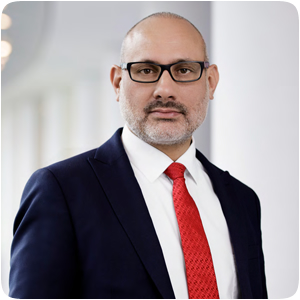 Transport and mobility is the lifeblood of society and an essential part of everyday day life, affecting the wellbeing of European citizens. Simply put, it concerns all of us. Sustainable alternative fuels and their infrastructure play a key role in the transition to ensure the successful decarbonisation of the transport sector.
Transport and mobility is the lifeblood of society and an essential part of everyday day life, affecting the wellbeing of European citizens. Simply put, it concerns all of us. Sustainable alternative fuels and their infrastructure play a key role in the transition to ensure the successful decarbonisation of the transport sector.
New elements to the current status of alternative fuels infrastructures in the EU.
I deeply welcome the European Commission's proposal to turn the Directive into a Regulation. Legally binding minimum requirements for Member States to deploy this infrastructure will give the Union the best possible capability to support the required uptake of alternative fuel vehicles, in all Member States and across all transport modes. Harmonised provisions will ensure the required accessibility to recharging and refuelling stations, facilitating the mobility of citizens in daily life, while also strengthening territorial cohesion and helping all regions in their transition towards a greener, climate neutral future.
Furthermore, transparent and fair pricing, combined with uniform and easy-to-use payment solutions for users, are necessary to guarantee full accessibility for all citizens and to make it easier to switch to sustainable transport solutions.
The Commission's proposal is a good starting point in many aspects, but I believe that there is room for further improvement and therefore, I propose to strengthen the policy framework as follows:
On light duty vehicles
Distance-based targets along both the TEN-T core and comprehensive networks must apply by 2025. In order to fully support and maximise the increasing share of electric vehicles on the market, it is also important to strengthen the fleet-based target through a higher minimum power output per vehicle. This will be particularly important in the short- and medium- term, to ensure a basic coverage enabling users to charge wherever they are driving. Therefore, the power output requirement per vehicle should be linked to the share of electric vehicles in the fleet, with higher output requirements in the beginning, which would decrease over the years, since the share will increase.
On Heavy Duty Vehicles
I believe that the proposed targets must be significantly strengthened. This means a significant increase of the minimum power of output chargers in order to enable drivers to charge during rest periods. In addition, we need an increased capacity for charging stations in safe and secure parking areas. Likewise, the proposed rollout of recharging stations along the TEN-T network must be done more coherent than in the Commission's proposal in order to support the market penetration of battery electric or fuel cell trucks.
With regards to LNG in road transport, on the other hand, I do not believe that this fuel has any significant potential to reduce GHG emissions from heavy-duty vehicles. Consequently, the Union should not encourage any further development of this infrastructure, which would risk stranded assets and detrimental lock-in effects in fossil technologies at the expense of sustainable alternatives with a higher potential to reduce emissions. Thus, LNG refuelling infrastructure for HDVs should not be part of this regulation.
Ensuring user-friendly and accessible recharging
Recharging of vehicles must be easy, efficient, and accessible for everybody in society. Therefore, all publicly accessible charging and refuelling stations need to be fully accessible to persons of reduced mobility. Furthermore, operators of charging stations shall be obliged to display the ad hoc price in ‘price per kWh’ before the start of a recharging session and ensure that electronic card payment is always possible. To enable better management of the electricity grid and ultimately trigger lower electricity prices for consumers, all charging points should be capable of smart charging.
I am convinced that it is important to improve the transparency and quality of the data, which operators of recharging and refuelling stations will gather. Therefore, the Commission should establish a European Access Point by connecting all National Access Points. The goal here is to set up an EU-application or interface enabling users to access an exhaustive EU-wide map and route planner, which contains all publicly accessible recharging and refuelling stations.
Hydrogen refuelling infrastructure
Clean hydrogen will be essential to reach the Union’s objectives under the European Green Deal as well as climate neutrality by 2050. A rapid technology development is taking place and Europe must harness the full potential of the hydrogen refuelling ecosystem for heavy duty road transport, which will require both gaseous and liquid hydrogen. Therefore, I propose to increase further the deployment of distance-based refuelling stations for HDVs along the TEN-T network.
Background
MEP Ismail Ertug was born in Amberg, Germany in 1975. After his studies, he held several different positions at the Health Insurance Scheme AOK. In 2009, he was elected to become a Member of the European Parliament for the first time, and he was reelected in 2014 as well as 2019.
Since then, MEP Ertug has been a Member of the Committee on Transport and Tourism (TRAN). In 2019, he was called to hold office as Vice-President of the S&D Group until December 2021. Besides his full membership in the TRAN committee, he is a substitute for the Committee on Industry, Research and Energy (ITRE). He is also a full Member of the Delegation for relations with the People’s Republic of China and a substitute of the Delegation for relations with the Arab Peninsula.
MEP Ertug is involved in topics such as the future of mobility, the reduction of CO2 emissions, the introduction of alternative and cleaner means of propulsion as well as the increase of automation and digitalisation. Furthermore, he stands for the rights of rail passengers, aims for simplifying cross-border travel as well as the regulation of guidelines for the development of the trans- European transport network.